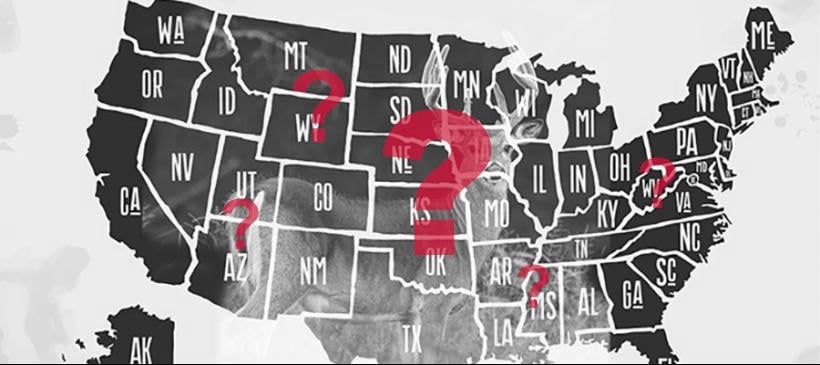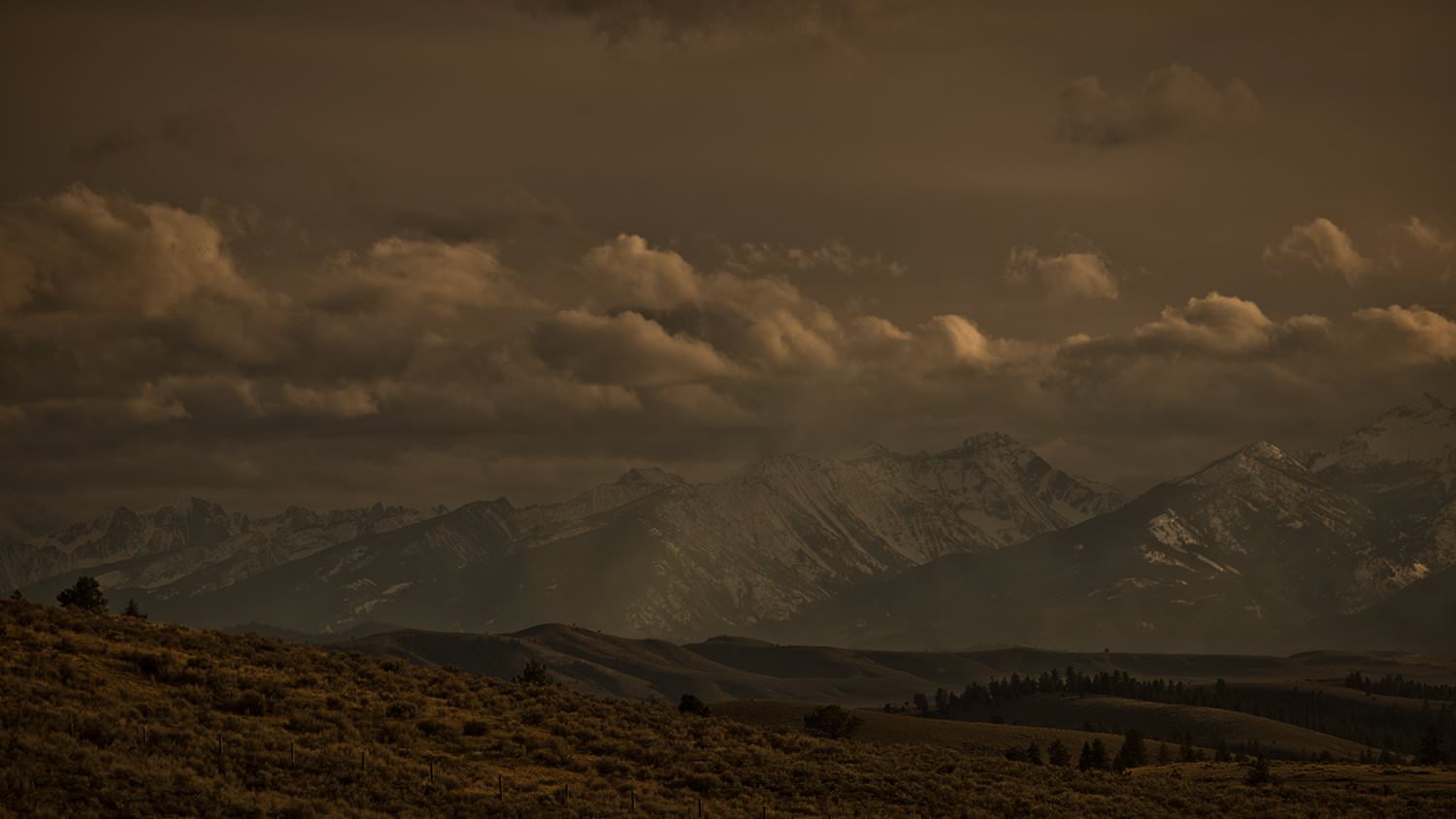5 Worst States for Buck Hunting
- May 2, 2017
- By Adam Preston
- Research

Thanks to exhaustive information compiled by the Quality Deer Management Association, trends in deer hunting, and especially buck hunting, have shown some interesting shifts in the haves and have-nots when it comes to whitetail opportunities. An earlier post here at the Realtree Business Blog identified the “Top 5” states for buck hunting. This time, let’s look at the lower-tier states — at least when it comes to overall trends.
Let me remind you that this exercise is somewhat subjective. Deer hunting across North America is still in an upward swing no matter how you slice it. Deer hunters from every region report success, and record-book entries are at an all-time high. Still, when you look just at the current trends (the QDMA breaks them out in five-year averages), there seems to be trouble brewing in many of the Southeastern and Northeastern states. Unlike the earlier post that used straight harvest numbers, we will rank the lower tier based off of the five-year trends. Without further ado, here are the bottom five.
5. Oklahoma
You would think that any next-door neighbor of Texas would stellar when it comes to buck hunting. Not so. The Sooner State produces excellent-caliber bucks each year, but the quantity just isn’t what one would expect. According to the QDMA report, hunters bagged 51,495 antlered bucks in 2015 (the most recent reporting year), which was down just slightly from the previous year.
The longer-range statistics, however, don’t bode as well for Oklahoma. The 2015 harvest was down 13 percent when compared to the state’s five-year average of 88,830 bucks per year. The droughts of the early years of this decade no doubt helped bring those numbers down. The same effect could be seen in many parts of Texas. Beside the significant drop in harvest, Oklahoma had the lowest buck density of any Southern state, with only 0.8 antlered bucks per square mile. It was the only state in that region, in fact, that had a buck density lower than 1 buck per square mile.
4. New Jersey
Garden State deer hunters are passionate about their pastime, and they also help state game managers keep the whitetail herd in check. New Jersey actually ranks in the Top 5 for one of the QDMA categories: Antlerless Harvest Per Square Mile, with an annual harvest of 3.6 antlerless deer PSM annually. The state has seen decreases, however, on buck-hunting production.
Over the five-year study, New Jersey saw a decrease of 17 percent in the number of bucks killed annually by hunters. In 2015, hunters took home 15,290 bucks. The five-year average was 18,434. That’s a significant drop, comparatively, but it should
also be noted that nearly half of the Northeastern states saw buck harvests decline during the reporting period.
New Jersey also suffers from a lack of older bucks in its population. Only 21 percent of the annual buck harvest — 3,871 deer — were 3-1/2 years old or older. So, the pickings for bucks are not only slim overall, there are few big ones roaming in the woods for hunters to pursue.
3. Connecticut
This tiny Northeastern state (just 5,543 square miles) normally wouldn’t make a list (good or bad) for deer hunting prospects. It lands on this list simply because of the dramatic drop it has seen in what little deer hunting opportunity is available.
Constitution State hunters bagged 4,574 antlered bucks in 2015, a 7 percent drop from the previous year and a 19 percent drop from the five-year average of 5,634. Buck densities are low in just about every North/Eastern state (except Maryland, Pennsylvania and West Virginia). Connecticut is home to just 0.9 antlered bucks per square mile, and 42 percent of those harvested are yearlings sporting their first set of antlers.
2. Florida
Again, these rankings are all about the current state of buck hunting in America. In 2015, Florida experienced the second greatest antlered buck harvest decrease vs. the five-year average: 25 percent. Hunters took home 61,492 bucks in 2015 compared to the longer-term average of 82,076.
Florida has dismal density ratio of 1.1 bucks per square mile, second-worst (next to Oklahoma) for the Southern region. There is a rhyme and reason for these declines, however, as Florida saw its first major regulation changes during the 2014 season. Part of the new regulations were antler restrictions on bucks and fewer antlerless deer days during the general season. Hunters asked for these rules, and the future is bright for a state that has more than 5.5 million acres of deer habitat earmarked in Wildlife Management Areas.
1. Rhode Island
If you looked at the Ocean State’s deer hunting regulations, you’d think there might be a deer behind every tree. Between archery, muzzleloader and shotgun seasons, you can literally hunt deer from September into January. The bag limits are generous, too. Statewide, hunters can shoot two bucks (except in one zone where it’s one) and plenty of does. One zone (4) allows hunters to take home eight does on one license and unlimited bonus permits after that if they fill of the tags.
The problem is more of hunting access. This is another tiny state — only 1,212 square miles (not even twice the size of Pike County, Illinois), yet has a human population of 1.1 million. Imagine what it must be like trying to find a hunting spot in this state’s rural areas!
But back to the question at hand: How bad is the current state of buck hunting that gives Rhode Island “top honors” in this list? In 2015, hunters here shot a whopping 30 percent fewer antlered bucks (only 762) compared to the five-year average of 1,088. If you crunch the numbers even more, you’ll find that fewer than 1-in-25 Rhode Island hunters took home a buck in 2015. On a positive note, 67 percent of the bucks that were harvested were older than 2-1/2 years old. This indicates that a majority of the state’s estimated 17,000 deer hunters are serious sportsmen and women who are dedicated to keeping the whitetail herd in check and allowing a good number of bucks to reach maturity.
